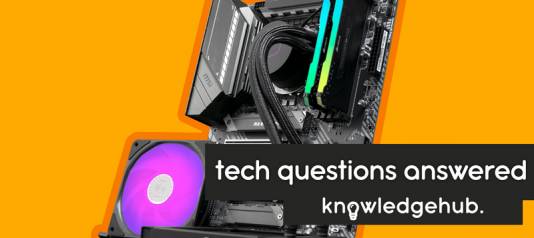A NAS device is a storage device connected to a network that allows storage and retrieval of data from a central location for authorised network users. NAS devices are flexible and scale out, meaning that as you need additional storage, you can add to what you already have. NAS is like having a private cloud, in the office. It’s faster, less expensive and provides all the benefits of a public cloud on site, giving you complete control.
What are the key benefits of having a NAS drive?
Well, firstly, a NAS drive gives you a central repository for all your files. It’s true that they don’t get as much attention as smart speakers or fitness trackers, but network attached storage (NAS) drives are still worth a place in your smart home. They might not be the most glamorous acquisition, but you’ll quickly find that they are indispensable.
Essentially, NAS drives are hard drives that connect to the web, making them extremely versatile and presenting a host of useful applications. They are especially useful for small businesses.
Data is a critical asset for companies
If businesses find themselves without access to date, companies may not provide their customers with the expected level of service. Poor customer service, loss of sales or team collaboration issues are all examples of what can happen when information is not available.
A lack of efficiency and potential loss of income awaits if customers cannot wait for a data outage to be fixed. Businesses also have other data-storage needs, such as:
- Lower cost options. Important for any business
- How easy is NAS to operate? Many small businesses do not have IT staff
- Data backup (and it’s always accessible when you need it)
- Growth capability
Small businesses across many industries are finding that NAS devices provide everything they need as they are an effective, low-cost storage solution. They are very easy to operate, cost less than most alternatives and provide easy-to-access storage
A NAS makes it easy for employees to collaborate, respond to customers quickly, and follow up on sales or other issues quickly because information is in one place. A good way to describe NAS is that it’s like a private cloud. Employees can work from wherever they are at anytime as all data can be accessed remotely.
So, the negatives of not having a NAS drive include:
- Scattered storage arrangements will not work for SMBs.
- Out-of-sync data
- Reliability and accessibility issues if storage goes down
- Delays in responding to customer service requests or sales queries

Which is the right Drive for NAS?
Here’s a technical bit – but don’t panic. Built for network-attached storage servers, Seagate IronWolf Pro drives are a great choice for NAS applications and are developed in close co-ordination with leading NAS partners such as Synology, QNAP, Netgear, Drobo and others to provide the best experience possible.
IronWolf Pro drives have the following features:
- AgileArrayTM firmware for RAID optimisation and 24×7 use
- RV sensors built into the hard drive to mitigate vibration in multi-bay NAS
- IronWolf Health Management for drive monitoring is built into compatible NAS operating systems
- Includes 2-year data recovery service and 5-year limited warranty
- Built for multi-user environments by providing high workload rates for heavy data transfer networks
The right hard drive will provide the best experience possible. IronWolf Pro-equipped NAS servers help provide tremendous competitive advantages, increase levels of customer service, and extend the collaborative reach across any project, at any business.
The NAS basics
NAS drives come in a variety of shapes and sizes. You’re probably familiar with the hard drive which sits inside your computer that stores all your files, including the operating system that runs everything, the applications you use, and anything you create.
A NAS drive takes one or more of that type of hard drive and puts it (or them) in a separate enclosure that connects directly to the internet, typically via an Ethernet cable plugged into your router. It also has its own power source and some basic on-board components and software to handle the transfer of files to and from the device.
The main advantage of a NAS drive is that it’s easily accessible from anywhere on your local Wi-Fi network, meaning you can download and upload files with your phone, tablet, and laptop. It’s so convenient. It’s always on and always available. Most NAS drives let you access your files over the internet, too, so you can get at your data from the office or while you’re away for the weekend or on holiday.
Another reason to get a NAS drive is the extra back-up potential. It’s always a good idea to have an additional back-up source. Many of them come with multiple bays for multiple disks, so you can set up two disks loaded with duplicate data – technically known as a RAID 1 configuration. With this setup, if one drive fails, your files are still available on the second one. Alternatively, you could manage two disks as one large drive (RAID 0). Like we said earlier – don’t panic – as even though this all sounds complicated and technical – the on-board software handles everything, so there’s nothing to worry about.
How it works
You might not be familiar yourself with NAS drives, but Windows and macOS certainly are. Once you’ve run through the installation process using the software that comes with your NAS, you’ll see it listed as a networked drive in File Explorer (Windows) or Finder (macOS). You’ll be able to transfer and edit files just like on any other drive.
Usually, you’ll be able to access files remotely over the internet through a web browser on the computer you’re connecting from, via a URL assigned to your NAS when you set it up. Mobile devices can connect this way too, or through the dedicated apps manufacturers such as Synology have built for Android and iOS to access their drives.
This might sound complex and technical, but when you actually start using it it’s pretty straightforward. Modern-day NAS drives are built to be as user-friendly as possible, so most of the technical stuff happens behind the scenes – you just get the benefits of networked storage without having to worry about the technicalities.
One slight drawback is speed, because sending files to and from a NAS via Wi-Fi takes a few seconds longer than communicating with a drive which is inside (or physically attached to) your computer. You won’t want to edit large files like photos and videos directly on your NAS, because these slower speeds can cause problems with files not opening or saving properly. It’s better if you think of NAS drives more as long-term storage for files you won’t need to change often, but might want to access at the drop of a hat!
You can buy NAS drives with hard disks already installed, or fit your own (either traditional hard drives or newer solid-state drives), but it’s best to go with those specifically designed to be used in NAS enclosures – the documentation included with the enclosure you buy should tell you the types of drive you’re looking for.
Best uses for NAS
If you have multiple devices manged by one, or several people who need to access the same files, then a NAS is the perfect solution. From photos to documents, music files to videos, they can all be safely stored securely. And if you’re working in collaboration with others then it’s a simple procedure.

Video and audio streaming
If you want to stream audio and video around the house, then NAS is perfect. There’s a popular software option called Plex which will enable you to do this easily. Photos, videos, and music can be beamed around your home to any device and can even be streamed over the web.
If you’re streaming, then a NAS drive gives you an advantage, because the audio and video you’re streaming may need to be encoded differently depending on which device you’re going to watch it on. Your streaming will be much quicker if you have NAS with more RAM and a faster processor.
Remote access
A NAS is a simple straightforward solution if you need to get your personal or work documents from remote locations. Of course, you can always access a home or office computer remotely, but that means you have to leave it switched on while you’re travelling or away. And if there’s a glitch or power cut then you’re in trouble. A NAS drive, meanwhile, will account for a much lower percentage of your electricity bill. Just make sure the NAS you want has a remote access feature before you buy it.
Cloud services
Everyone has probably heard of cloud services such as Dropbox and Google Drive and it’s fair to say that they have taken over some of the roles that NAS provided when it comes to sharing files and data between devices. However, importantly, NAS drives often provide much larger capacities than cloud storage options. NAS only requires the upfront cost of the discs, it is not a monthly subscription.
Take a look at our huge range of NAS drives here.



